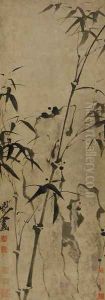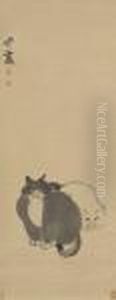Min Zhen Paintings
Min Zhen, born in 1730 in Nantong, Jiangsu province, was a notable figure in the Qing Dynasty's art scene, particularly renowned for his painting and calligraphy. Despite being visually impaired, Min developed a distinctive style that set his work apart from his contemporaries. His journey as an artist was marked by resilience and innovation, navigating through the challenges presented by his impaired vision to create works that were deeply expressive and technically accomplished.
Min Zhen's art primarily focused on landscapes, flowers, and birds, showcasing his meticulous attention to detail and his ability to convey depth and emotion. His paintings often reflected a blend of realism and poetic imagination, capturing the essence of his subjects with precision and sensitivity. His calligraphy, characterized by its vigorous and bold strokes, displayed a unique blend of strength and elegance, earning him considerable acclaim.
Despite his physical limitations, Min Zhen's contribution to the arts during the Qing Dynasty was significant. He was part of a larger movement that saw artists exploring more personal and expressive styles, moving away from the more rigid and formal traditions that had dominated Chinese art for centuries. His work not only reflects his personal struggles and triumphs but also offers insight into the broader cultural and artistic shifts of his time.
Throughout his life, Min Zhen remained dedicated to his craft, leaving behind a legacy that continues to inspire and captivate. His ability to overcome adversity and create art that resonated with so many speaks to his enduring spirit and talent. Min Zhen passed away in 1793, but his contributions to Chinese art history have ensured that his name and work continue to be celebrated and studied by art historians and enthusiasts alike.


